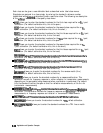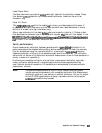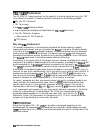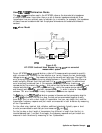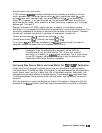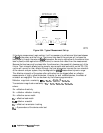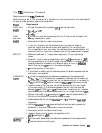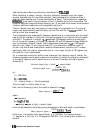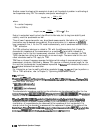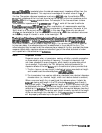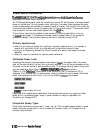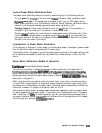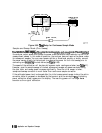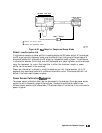
Fabricating and defining calibration standards for
TRL/LRM
When calibrating a network analyzer, the actual calibration standards must have known
physical characteristics For the reflect standard, these characteristics include the offset in
electrical delay (seconds) and the loss (ohms/second of delay). The characteristic impedance,
$@@@:
Z@.,
is not used in the calculations in that it is determined by the line standard. The
reflection coefficient magnitude should optimally be 1.0, but need not be known since the same
reflection coefficient magnitude must be applied to both ports.
The thru standard may be a zero-length or known length of transmission line. The value of
length must be converted to electrical delay, just like that done for the
reelect
standard. The
loss term must also be specified.
The line standard must meet specific frequency related criteria, in conjunction with the length
used by the thru standard. In particular, the insertion phase of the line must not be the same
as the thru. The optimal line length is
l/4
wavelength (90 degrees) relative to a zero length
thru at the center frequency of interest, and between 20 and 160 degrees of phase difference
over the frequency range of interest. (Note: these phase values can be
fN
x 180 degrees
where N is an integer.) If two lines are used (LRL), the difference in electrical length of
the two lines should meet these optimal conditions Measurement uncertainty will increase
significantly when the insertion phase nears zero or is an integer multiple of 180 degrees, and
this condition is not recommended.
For a transmission media that exhibits linear phase over the frequency range of interest, the
following expression can be used to determine a suitable line length of one-quarter wavelength
at the center frequency (which equals the sum of the start frequency and stop frequency
divided by 2):
Electrical length (cm) = (LINE
-
0 length THRU)
Electrical length (cm) =
(15000 x VF)
fl(MH~z)
+
f2(MHz)
let:
fl = 1000 MHz
f2=2OOoMHz
VF = Velocity Factor = 1 (for this example)
Thus, the length to initially check is 5 cm.
Next, use the following to verify the insertion phase at fl and f2:
Phase (degrees) =
(360x
f x
1)
V
where:
f
=
frequency
l=lengthofline
V
=
velocity
=
speed of light x velocity factor
which can be reduced to the following using frequencies in MHz and length in centimeters:
Phase (degrees) approz =
0.012 x
f(MHz)
x
l(cm)
VF
So for an air line (velocity factor approximately 1) at 1000 MHz, the insertion phase is
60
degrees for a 5 cm line; it is 120 degrees at 2000 MHz. This line would be a suitable line
standard.
648
Application and Operation Concepts



